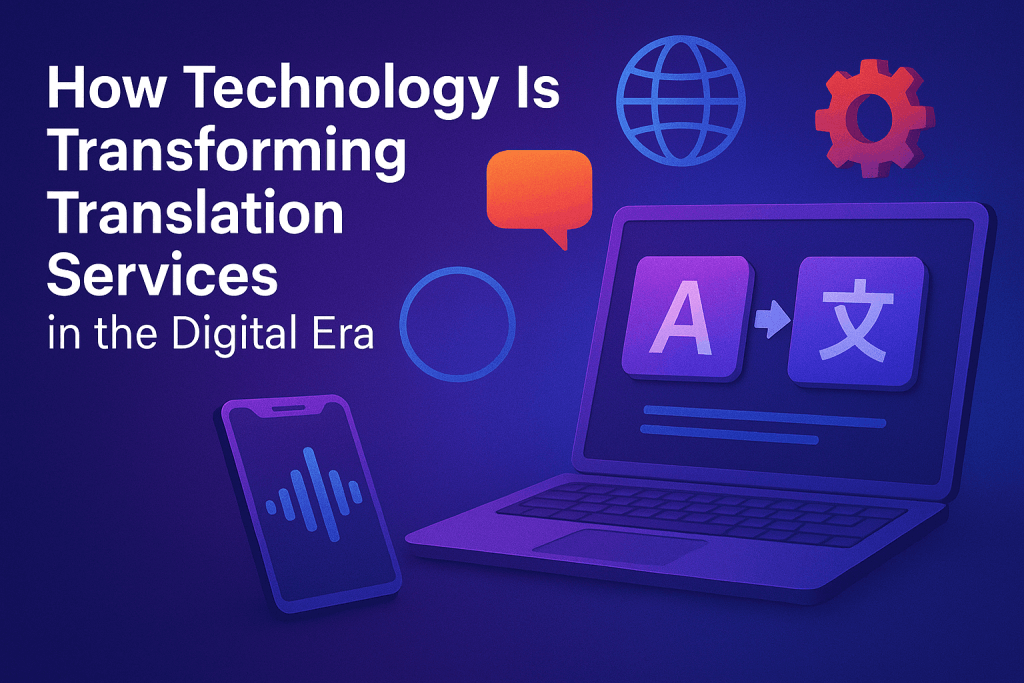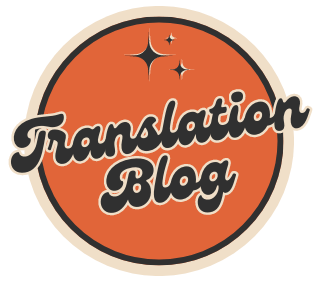In today’s fast-paced, globalized world, the demand for translation and localization services is at an all-time high. Whether it’s global enterprises seeking to connect with diverse markets or startups expanding into new regions, accurate and timely translation is crucial. As communication barriers continue to fall, language service professionals are turning to innovative technologies to streamline their work and provide more value to clients.
This article explores how advancements in technology are reshaping the translation industry—enhancing workflows, reducing costs, and ensuring quality—while still preserving the human touch that’s essential to effective communication.

The Rise of Translation Technologies
Technology has become an indispensable part of modern translation. Early on, translation memories (TMs) and computer-assisted translation (CAT) tools revolutionized how linguists handled repetitive content. These tools enabled translators to store and reuse segments of text, increasing speed and consistency. Today, we’ve moved far beyond that.
AI-powered translation tools such as neural machine translation (NMT) engines now play a prominent role in the industry. Platforms like Google Translate and DeepL use advanced algorithms to deliver increasingly accurate translations, especially for widely spoken languages. These tools are particularly useful for getting the gist of content quickly, allowing human translators to then polish and adapt the text as needed.
Additionally, cloud-based collaboration tools have transformed team workflows. Translators, editors, project managers, and clients can now work together in real time across geographies. This not only improves efficiency but also reduces delays and miscommunication—key factors in fast-paced industries like finance, tech, and e-commerce.
Benefits for Businesses, Startups, and Global Brands
For businesses aiming to scale globally, language services are a strategic investment. Translation enables companies to tailor their content to local audiences, build trust, and comply with regional regulations. Whether it’s legal contracts, product descriptions, software interfaces, or marketing campaigns—every element benefits from accurate and culturally appropriate translation.
Startups, in particular, gain a competitive edge by entering non-English speaking markets early. With budget constraints in mind, many startups rely on a hybrid model: leveraging machine translation for preliminary drafts and using professional translators for editing and cultural adaptation.
Even in niche sectors like online gaming and digital entertainment, clear and compelling multilingual communication is crucial. For instance, gaming platforms like foxygold-casino.com stand out by offering multilingual support that enhances user experience and boosts accessibility for players worldwide. This not only broadens their reach but also builds trust with non-English-speaking users who value localized content.
Common Challenges in Tech-Driven Translation
While technology offers numerous benefits, it also presents unique challenges for translators. One of the most pressing concerns is maintaining linguistic and cultural integrity. Even the best AI tools can miss context, idiomatic expressions, or culturally sensitive references. Human oversight remains critical to ensure tone, nuance, and intention are preserved.
Data privacy and security are additional concerns. Translators often handle sensitive information, from personal documents to proprietary corporate content. Using cloud-based tools means data might be stored on third-party servers, raising the stakes for compliance with regulations like GDPR.
Overreliance on automation is another issue. While automation accelerates translation, it can reduce the perceived value of human expertise. Language professionals must position themselves as specialists who provide value beyond mere word-for-word translation—such as localization strategy, transcreation, and consultation.
Key Tech Tools Empowering Today’s Translators
To remain competitive and meet evolving client demands, translators are embracing a suite of tools:
- CAT Tools (e.g., SDL Trados, MemoQ): Improve productivity through translation memory and terminology management.
- Quality Assurance (QA) Tools: Catch grammar and formatting errors automatically, reducing post-editing time.
- AI-Powered Translation Engines (e.g., DeepL, Amazon Translate): Assist with rough drafts or low-priority content.
- Project Management Platforms (e.g., Smartcat, Lokalise): Streamline communication, file sharing, and workflow tracking.
- Glossary and Terminology Databases: Maintain consistency in technical documents and brand messaging.
By integrating these technologies, translators can increase throughput, maintain high standards, and better serve clients in competitive industries.
The Growing Role of Localization
Translation is no longer just about converting words from one language to another. Localization goes deeper—it ensures that content feels native to the target audience. This includes adjusting images, date formats, humor, cultural references, and even legal phrasing.
Businesses that invest in professional localization demonstrate cultural sensitivity and customer-centric thinking. In the digital era, where brand perception can make or break success, such details matter more than ever.
Language professionals with cultural expertise, market knowledge, and technical fluency are in high demand. Translators who develop these skills—and who can navigate both the linguistic and technological landscapes—position themselves as indispensable assets in global business strategies.
What’s Next? Translation Trends to Watch
As the translation field continues to evolve, several emerging trends are worth watching:
- Real-Time AI Translation: More platforms are incorporating live translation for video calls, webinars, and real-time chats.
- Voice and Speech Translation: AI tools are expanding beyond text into speech, allowing spoken content to be translated in real time.
- Adaptive Machine Learning: Translation engines that learn from user corrections to improve over time are becoming more sophisticated.
- API Integrations: Translation is becoming more deeply embedded into CMS, e-commerce, and customer service platforms.
These trends point toward a future where seamless, multilingual communication is the norm, not the exception.
Final Thoughts
Technology is undoubtedly reshaping the translation industry, opening up new possibilities and challenges alike. While automation boosts speed and scalability, the role of the human translator remains vital—especially when context, tone, and culture come into play. By embracing technology without losing sight of their core linguistic expertise, translators can thrive in this dynamic and ever-evolving landscape.

